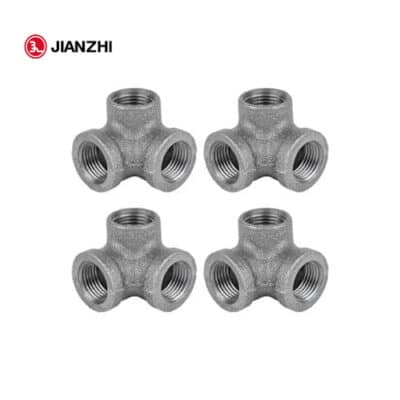Removing black pipe gas fittings without damaging the surrounding piping requires careful attention and the use of appropriate tools and techniques.
Here's a step-by-step guide to safely remove black pipe gas fittings:Turn Off Gas Supply: Before beginning any work, shut off the gas supply to the affected section of piping. Locate the main gas valve and turn it clockwise to close it completely. It's essential to ensure that there is no gas flowing through the pipes before proceeding.
Release Pressure: To release any remaining gas pressure in the pipes, open a nearby gas appliance or a gas line valve downstream from the section you're working on. This will allow any trapped gas to escape safely.
Inspect Fitting: Before attempting to remove the fitting, inspect it carefully for any signs of corrosion, damage,
black pipe gas fittings or thread distortion. This assessment will help you determine the best approach for removal and whether the fitting needs to be replaced.
Apply Penetrating Oil: If the fitting is stubborn or corroded, apply a liberal amount of penetrating oil (such as WD-40) to the threads. Allow the oil to penetrate for several minutes to help loosen the connection and make it easier to remove.
Use Wrenches: Use two pipe wrenches—one to hold the pipe steady and the other to turn the fitting counterclockwise. Secure the pipe wrench on the pipe near the fitting to prevent twisting or damage to the surrounding piping. Use the second wrench to grip the fitting itself and turn it counterclockwise to loosen it.
Turn Slowly: Turn the wrenches slowly and steadily to avoid putting excessive strain on the piping. If the fitting is particularly stubborn, apply gradual pressure and allow the penetrating oil to work its way into the threads. Avoid applying too much force, as this can damage the piping or cause it to twist.
Inspect Threads: Once the fitting is removed, carefully inspect the threads on both the fitting and the piping for any signs of damage, corrosion, or wear. Clean the threads thoroughly with a wire brush or pipe thread cleaner to remove any debris or residue.
Replace Fitting if Necessary: If the fitting is damaged or shows signs of wear, it's essential to replace it with a new fitting of the same size and type. Ensure that the replacement fitting is compatible with the existing piping and meets local building codes and regulations.
Check for Leaks: After installing the new fitting, check for leaks by performing a pressure test on the gas line. Use a solution of soapy water applied to the connections and joints to detect any leaks. If bubbles form, tighten the connections further or replace any faulty components.
Restore Gas Supply: Once the repair is complete and there are no leaks detected, restore the gas supply by reopening the main gas valve. Test the affected gas appliances to ensure they are functioning correctly and safely.
By following these steps carefully and using proper tools and techniques, you can remove black pipe gas fittings without damaging the surrounding piping and ensure a safe and effective repair or replacement process. If you're unsure or uncomfortable with performing this task, it's always best to consult with a qualified plumber or gas technician for assistance.

